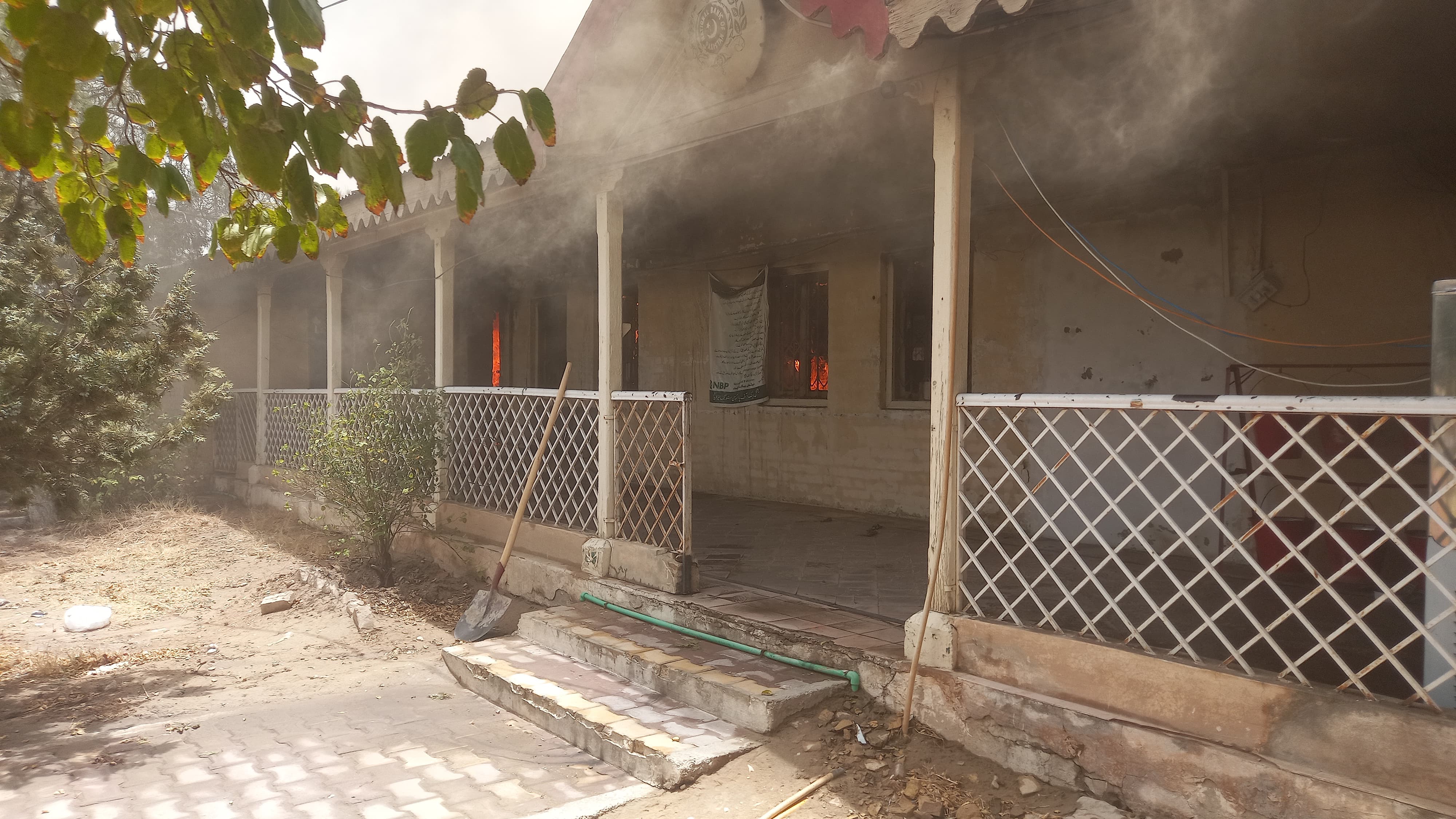Mr. A
MPA (400+ posts)
ISLAMABAD: The government has set its second-year economic growth goal at 4% modestly and has forecast average 8.5% inflation, reflecting unimpres5sive economic prospects in the IMF's loan programmed.
Providing additional currency depreciation, the per capita income in the dollar is also forecast below $ 1,500 for the next fiscal year 2019-20 compared to the previous fiscal year.
The low economic growth target combined with higher inflation will put in doubts Prime Minister Imran Khan's government from implementing its plan for 10 million jobs and the construction of five million housing units.
As well, the government has set an ambitious target on the current-account deficit of 3% or $8.2 billion for the following fiscal year from 1 July. The next fiscal year will coincide with Pakistan Tehreek-e-Insaf's second-year in power.
----------------------------------------------------------------------------------
“The economic growth target for the next fiscal year is 4% and inflation target is 8.5%,”
----------------------------------------------------------------------------------
Makhdoom Khusro Bakhtiar said that, following the meeting of the Annual Plan Coordination Committee (APCC), Federal Minister of Planning and Development. The macroeconomic framework for the fiscal year 2019-20 was approved by the APCC on Thursday. This plan is now to be submitted for formal approval before the NEC, the macroeconomic planning constitutional body.
PM Imran chair the NEC, while the planning minister leads the APCC huddle. The target of 4% is slightly higher than the 3.3% growth rate of the outgoing fiscal year. In the fiscal year ahead, the agriculture sector, which grew 0.8 percent, is expected to expand 3.5 percent.
In the industrial sector, the government does not expect a major improvement and has set a target of 2.3 percent growth for the sector, contributing over half of the total tax revenues. In the coming fiscal year, the manufacturing sector will grow by 2.6 percent, compared with a negative growth of 0.3 percent this year.
In the major sector, the growth rate will be only 1.5%, compared to negative 2% growth in the previous fiscal year. The services sector is expected to grow at a pace of 4.8 %, almost the same level as the financial and insurance sector, other private and general government services, in the last fiscal year.
For the next fiscal year, the average inflation rate is forecast to be 8.5% based on the expected high tax rate and an increase in the IMF's price of electricity and gas.
Approved by the APCC, the balance of payments framework also seems ambitious as it is based on the expectations that the continuing declined trend in exports will change. Exports became slightly negative in the first ten months of the financial year, with imports almost 8 %. This resulted in a $26.3 trillion trade deficit, 12.8% lower than last fiscal year.
The following fiscal year's macro-economic targets show a 6 percent increase in exports and an export target of almost US$ 26 billion. That is, though, less than the Prime Minister's advisor's claim on trade. Slightly higher than the revised projections for the current fiscal year, importations have been expected to be slightly over 54 billion dollars. The government, therefore, expects to reduce the trade deficit in the new fiscal year to $ 28.2 billion.
The government expects no significant improvements in current low investment due to fiscal consolidation. The investments to GDP ratio have been fixed at 15.8%, which is marginally higher than the 15.4% of the current financial year. There will also be no major change in fixed investment and government plans at the end of the next fiscal year will reach around 14.2 percent. In the fiscal year 2019-20, Public investment is expected to slightly increase to 4.1% of GDP.
Private investment can also improve marginally to 10.1% of GDP this year by 9.8%. For the fiscal year 2019-20, the national savings rate is set to 12.8%.
 www.rightdeed.com
www.rightdeed.com
Providing additional currency depreciation, the per capita income in the dollar is also forecast below $ 1,500 for the next fiscal year 2019-20 compared to the previous fiscal year.
The low economic growth target combined with higher inflation will put in doubts Prime Minister Imran Khan's government from implementing its plan for 10 million jobs and the construction of five million housing units.
As well, the government has set an ambitious target on the current-account deficit of 3% or $8.2 billion for the following fiscal year from 1 July. The next fiscal year will coincide with Pakistan Tehreek-e-Insaf's second-year in power.
----------------------------------------------------------------------------------
“The economic growth target for the next fiscal year is 4% and inflation target is 8.5%,”
----------------------------------------------------------------------------------
Makhdoom Khusro Bakhtiar said that, following the meeting of the Annual Plan Coordination Committee (APCC), Federal Minister of Planning and Development. The macroeconomic framework for the fiscal year 2019-20 was approved by the APCC on Thursday. This plan is now to be submitted for formal approval before the NEC, the macroeconomic planning constitutional body.
PM Imran chair the NEC, while the planning minister leads the APCC huddle. The target of 4% is slightly higher than the 3.3% growth rate of the outgoing fiscal year. In the fiscal year ahead, the agriculture sector, which grew 0.8 percent, is expected to expand 3.5 percent.
In the industrial sector, the government does not expect a major improvement and has set a target of 2.3 percent growth for the sector, contributing over half of the total tax revenues. In the coming fiscal year, the manufacturing sector will grow by 2.6 percent, compared with a negative growth of 0.3 percent this year.
In the major sector, the growth rate will be only 1.5%, compared to negative 2% growth in the previous fiscal year. The services sector is expected to grow at a pace of 4.8 %, almost the same level as the financial and insurance sector, other private and general government services, in the last fiscal year.
For the next fiscal year, the average inflation rate is forecast to be 8.5% based on the expected high tax rate and an increase in the IMF's price of electricity and gas.
Approved by the APCC, the balance of payments framework also seems ambitious as it is based on the expectations that the continuing declined trend in exports will change. Exports became slightly negative in the first ten months of the financial year, with imports almost 8 %. This resulted in a $26.3 trillion trade deficit, 12.8% lower than last fiscal year.
The following fiscal year's macro-economic targets show a 6 percent increase in exports and an export target of almost US$ 26 billion. That is, though, less than the Prime Minister's advisor's claim on trade. Slightly higher than the revised projections for the current fiscal year, importations have been expected to be slightly over 54 billion dollars. The government, therefore, expects to reduce the trade deficit in the new fiscal year to $ 28.2 billion.
The government expects no significant improvements in current low investment due to fiscal consolidation. The investments to GDP ratio have been fixed at 15.8%, which is marginally higher than the 15.4% of the current financial year. There will also be no major change in fixed investment and government plans at the end of the next fiscal year will reach around 14.2 percent. In the fiscal year 2019-20, Public investment is expected to slightly increase to 4.1% of GDP.
Private investment can also improve marginally to 10.1% of GDP this year by 9.8%. For the fiscal year 2019-20, the national savings rate is set to 12.8%.
Govt’s Plans For Growth At 4% For FY20
ISLAMABAD: The government has set its second-year economic growth goal at 4% modestly and has forecast average 8.5% inflation, reflecting unimpres5sive economic prospects in the IMF's loan programmed.
 www.rightdeed.com
www.rightdeed.com
- Featured Thumbs
- https://www.rightdeed.com/images/blogs_images/1558694833.jpg


























